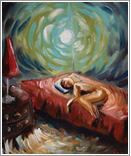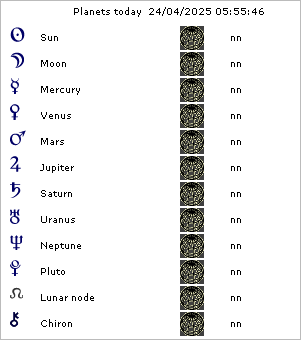|
Dreams: our principal relationship model with our unconscious
By Lidia Fassio
Dreams are our principal relationship model with our unconscious, which express themselves through symbols, and have a symbolic language that, if we cannot interpret , will completely stop our interest, making us unable to make sense or gather information.
At times dreams destabilise us because they seem to enter into reality in disruptive way, and this is why they create an alternative or simply different way of interpreting things, a way that is not curbed to your I.
Dreams – stated Aldo Carotenuto – are a route that is useful to find an unexplored continent: the unconscious.
The dreams govern development; they regulate and at times absolutely restore processes that are used for reorganising the psyche. At times they instead carry out their function by showing us the distorted or disturbed models we are carrying out; in any case the dreams are a trace, a conductive thread that through the staging of theatrical performances, in which there is a web that develop situations, actions interpreted by several personages, and try to make us reach a widening of our conscience.
Dreams are therefore the symbolic expression of the psychological situation of the subject we dream of. We might say that they are almost a radiography that communicates a lot of information at different levels, although to interpret them is particular – more than a technique.
Dreams connect the unconscious mind with the conscious one or try to connect our inferior processes (instincts, emotions and impulses) in a more elevated world, that of the spirit.
Dreams in a certain sense free the mystery that unites body and soul, individually and universally, and offer alternatives to ordinary reality since they open our eyes to see things in new way, revealing secret emotions and understanding, wishes and necessity, refused parts of ourselves, incomplete and unused talent. Often there seem irrational images that uproot the conscious mind and introduce it to something of wider.
Dreams can offer us answers to problems that our conscience would not manage to solve, thus transforming themselves into powerful inner teachers; a great deal of the inventions and scientific and technological discoveries have been achieved through dreams, in which the solution of a problem appeared in a symbolic form.
A famous invention realised by its inventor through a dream: he saw himself as cannibals' prey as they were spearing him with lances that had holes on the points, thus offering him the key to solve the problem that was troubling him for many years over a sewing machine.
Dreams represent the dilemmas that the internal world entertains with the external world and are used for maintaining a balance, a psychic homeostasis in the sense that disharmony compensates the outside world.
Dreams represent a function of transcended reality; there is no space in dreams, there is no time, there are no limits: we can fly, can be the highest, defeat incredible and monstrous forces, and we can be in the most faraway places at the same time. They can make us go down into our body and reveal very important things about ourselves to ourselves about our health; they let us live things as if they are real, giving us emotions and sensations as if they were reality … but also things that in reality we refuse to recognise.
Dreams are an essential connection between somatic and transcended experiences.
All the poets, artists, philosophers, have been fascinated by dreams and by their symbolic language: to understand what they want to tell us we must learn to receive the symbols as pure representations of an archetypal and superior psychic energy and use our intuition to understand their meaning.
Print this article
|
 |
|



